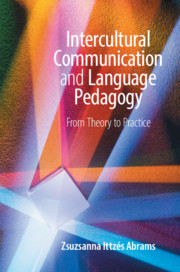Book contents
- Intercultural Communication and Language Pedagogy
- Intercultural Communication and Language Pedagogy
- Copyright page
- Dedication
- Contents
- Figures
- Tables
- Acknowledgments
- Introduction
- Part I Theoretical and Methodological Foundations
- Part II Pedagogical Implementation
- Chapter 4 Intercultural Communication: Teaching Vocabulary
- Chapter 5 Intercultural Communication: Teaching Grammar
- Chapter 6 Intercultural Communication: Teaching Pragmatics
- Chapter 7 Intercultural Communication: Teaching Paralinguistic Features
- Chapter 8 Intercultural Communication: Teaching Nonverbal Communication
- Chapter 9 Intercultural Communication: Teaching Cultural Knowledge
- Chapter 10 Assessing Intercultural Communication
- Part III Intercultural Communication and the Personal Journey
- Appendix Curricular Plans for Teaching with an Intercultural Communication Orientation
- References
- Index
Chapter 4 - Intercultural Communication: Teaching Vocabulary
from Part II - Pedagogical Implementation
Published online by Cambridge University Press: 15 August 2020
- Intercultural Communication and Language Pedagogy
- Intercultural Communication and Language Pedagogy
- Copyright page
- Dedication
- Contents
- Figures
- Tables
- Acknowledgments
- Introduction
- Part I Theoretical and Methodological Foundations
- Part II Pedagogical Implementation
- Chapter 4 Intercultural Communication: Teaching Vocabulary
- Chapter 5 Intercultural Communication: Teaching Grammar
- Chapter 6 Intercultural Communication: Teaching Pragmatics
- Chapter 7 Intercultural Communication: Teaching Paralinguistic Features
- Chapter 8 Intercultural Communication: Teaching Nonverbal Communication
- Chapter 9 Intercultural Communication: Teaching Cultural Knowledge
- Chapter 10 Assessing Intercultural Communication
- Part III Intercultural Communication and the Personal Journey
- Appendix Curricular Plans for Teaching with an Intercultural Communication Orientation
- References
- Index
Summary
One of the most important contributors to understanding and speaking a second or foreign language is the lexicon, which is the focus of the first pedagogical chapter. After briefly reviewing relevant research regarding how vocabulary is learned in a second or foreign language, the discussion turns to issues in language variation and communication strategies that language learners and users might draw on, when they lack the necessary vocabulary to convey their intended meaning. Since research into L2/Lx lexical acquisition is vast, a full review is not possible, therefore this chapter focuses specifically on findings that are most relevant for promoting intercultural communicative competence: what it means to know words and how to teach vocabulary effectively. The chapter concludes with a proposal of connecting this research to concepts in intercultural communicative competence, sample language teaching tasks, and activities.
Keywords
- Type
- Chapter
- Information
- Intercultural Communication and Language PedagogyFrom Theory To Practice, pp. 83 - 105Publisher: Cambridge University PressPrint publication year: 2020



